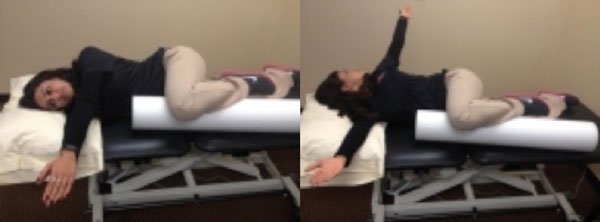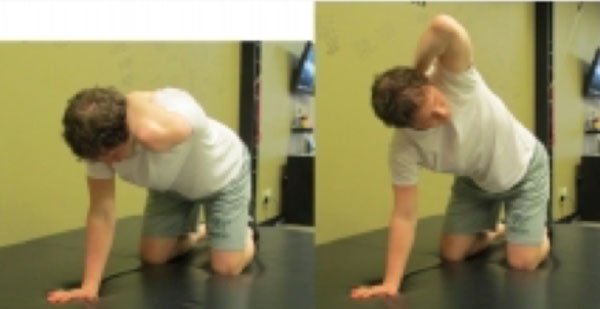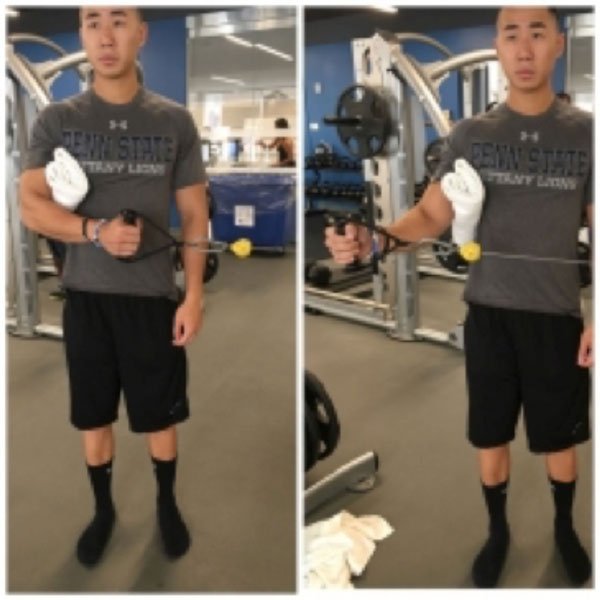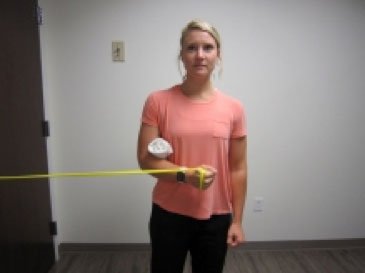What Is Our Rotator Cuff & Why Is It So Important?
The rotator cuff is a group of four muscles (supraspinatus, infraspinatus, teres minor, and subscapularis) and their corresponding tendons that surround the shoulder joint. They play a huge role in keeping the head or your upper arm bone firmly within the shallow socket of the shoulder.
Our shoulders perform many activities that we may take for granted. They help us reach for something high on a shelf, comb our hair or tuck our shirt in behind our back.
How do I know if my rotator cuff is weak or problematic?
Does your shoulder click or hurt when raising it over your head?
Are you compensating during your upper body lifts including chest, shoulders or back?
Do you feel that one of your shoulders is more dominant than the other during different loaded exercises?
Do you feel unstable or weak during any overhead movements?
When considering strengthening our rotator cuff for stability during any overhead movements we want to also take into account the importance of how our thoracic spine and our shoulder blade are moving with respect to our shoulder. When warming up before any type of activity I always recommend performing thoracic mobility then, middle & lower trapezius strengthening followed by rotator cuff stability exercises.
Here is a list of exercises to begin prior to activity to help promote a healthy shoulder girdle complex.
1) Sidelying Open Books (Thoracic Mobility)
With head on pillow, lay down on one side with top knee bent up towards the chest and supported on a roll, open up the top arm and reach back until you feel a stretch, then close back. Follow your arm with your head as you open and close. Do this on the other side as well; do more reps on the side that is tighter.
10 repetitions each side (1 set)
2) Quadruped Thoracic Extension (Mobility)
Start with both hands on the floor in quadruped. Then position one hand (you’ll do both) at the nape of your neck. Keeping the hand and pelvis stationary rotate the thoracic spine open. You can also try sitting back onto your heels to isolate the thoracic spine more.
10 repetitions each side (1 set)
3) Middle Trapezius Strengthening
Lay face down with thumbs up towards the ceiling in an extended position. Pinch your shoulder blades together (do NOT shrug). Then lift both arms up towards the ceiling, holding for 2 seconds before lowering down.
15 repetitions each side (2 sets)
4) Lower Trapezius Strengthening
Lay face down with thumbs towards the ceiling away from your head about 45 degrees. This is called the scaption plane, which is a NEUTRAL position for the shoulder. Lift both arms up off the ground towards the ceiling and hold for 2 seconds before lowering down.
15 repetitions each side (2 sets)
5) Basic Resisted External Rotation
Start by holding the cable down by your side with your elbows bent at 90 degrees. Keep a towel between your elbow and your side when performing this exercise. Your hand should be near your stomach with your core and elbow tight. Pull the band in the other direction (external rotation) until no longer possible. Slowly return to starting position.
15 repetitions (2 sets)
6) Basic Resisted Internal Rotation
With one end of the theraband secured at waist height, keeping the elbow tucked in at your side, rotate hand in toward your stomach. Do not rotate body.
15 repetitions (2 sets)
7) Resisted Horizontal Abduction (Middle Trapezius and Rear Deltoid Strengthening)
While holding an elastic band with your elbows straight and in front of your body, pull your arms apart and towards the side. Focus on squeezing your shoulder blades together in the back.
15 repetitions (2 sets)







